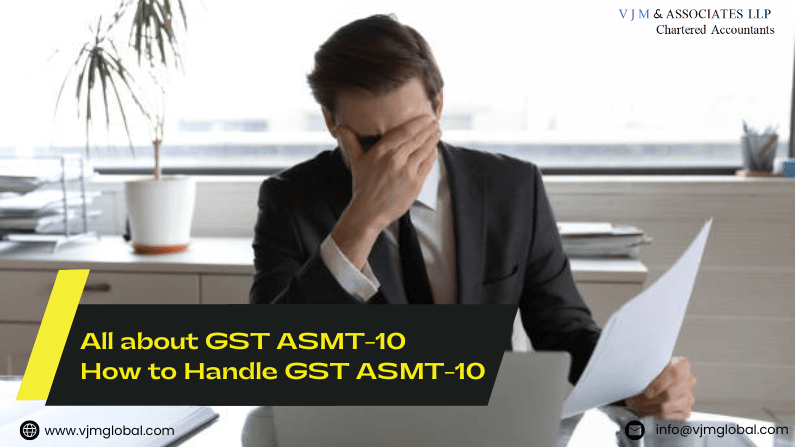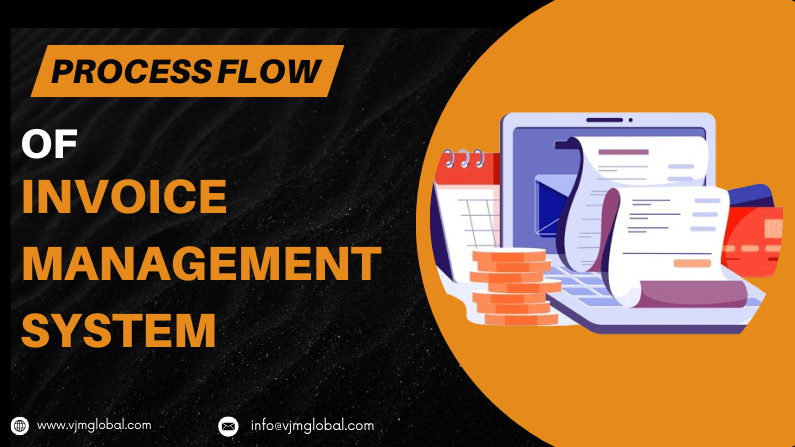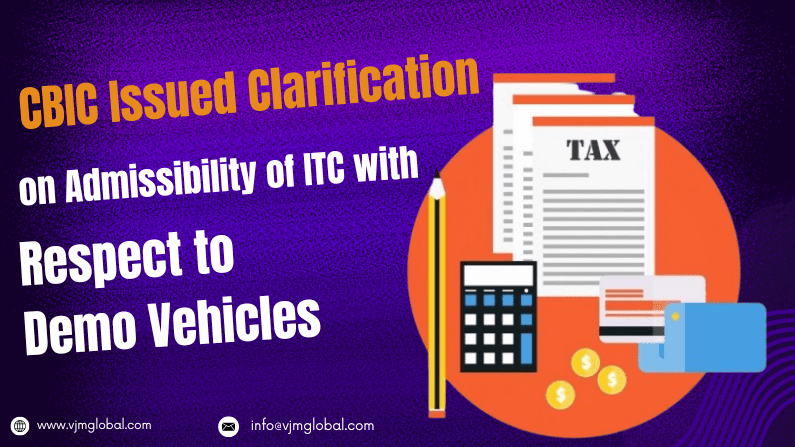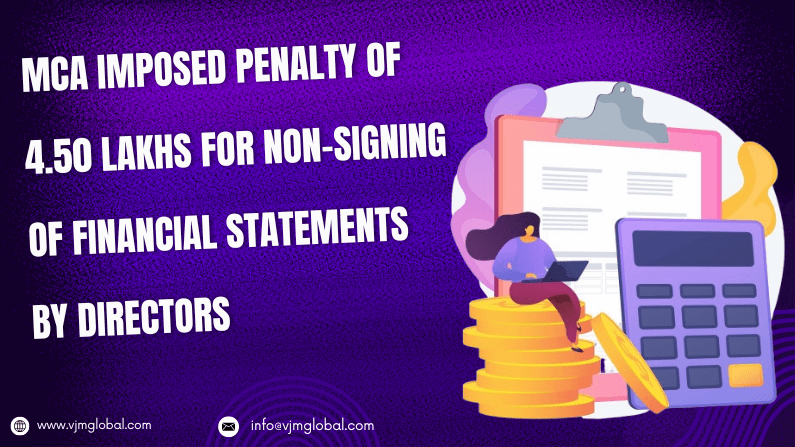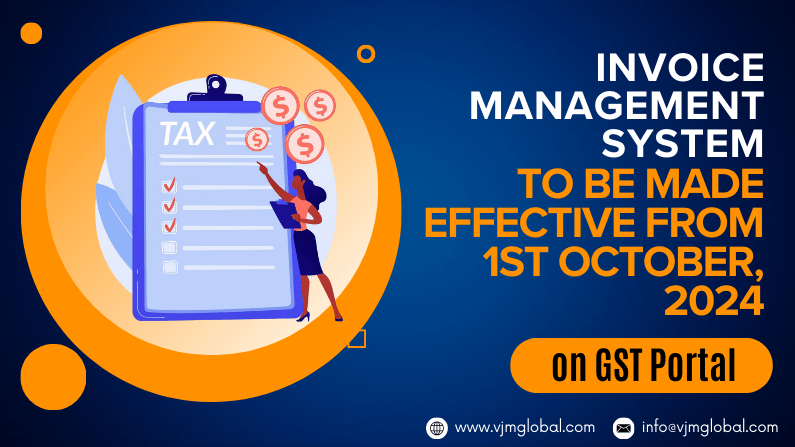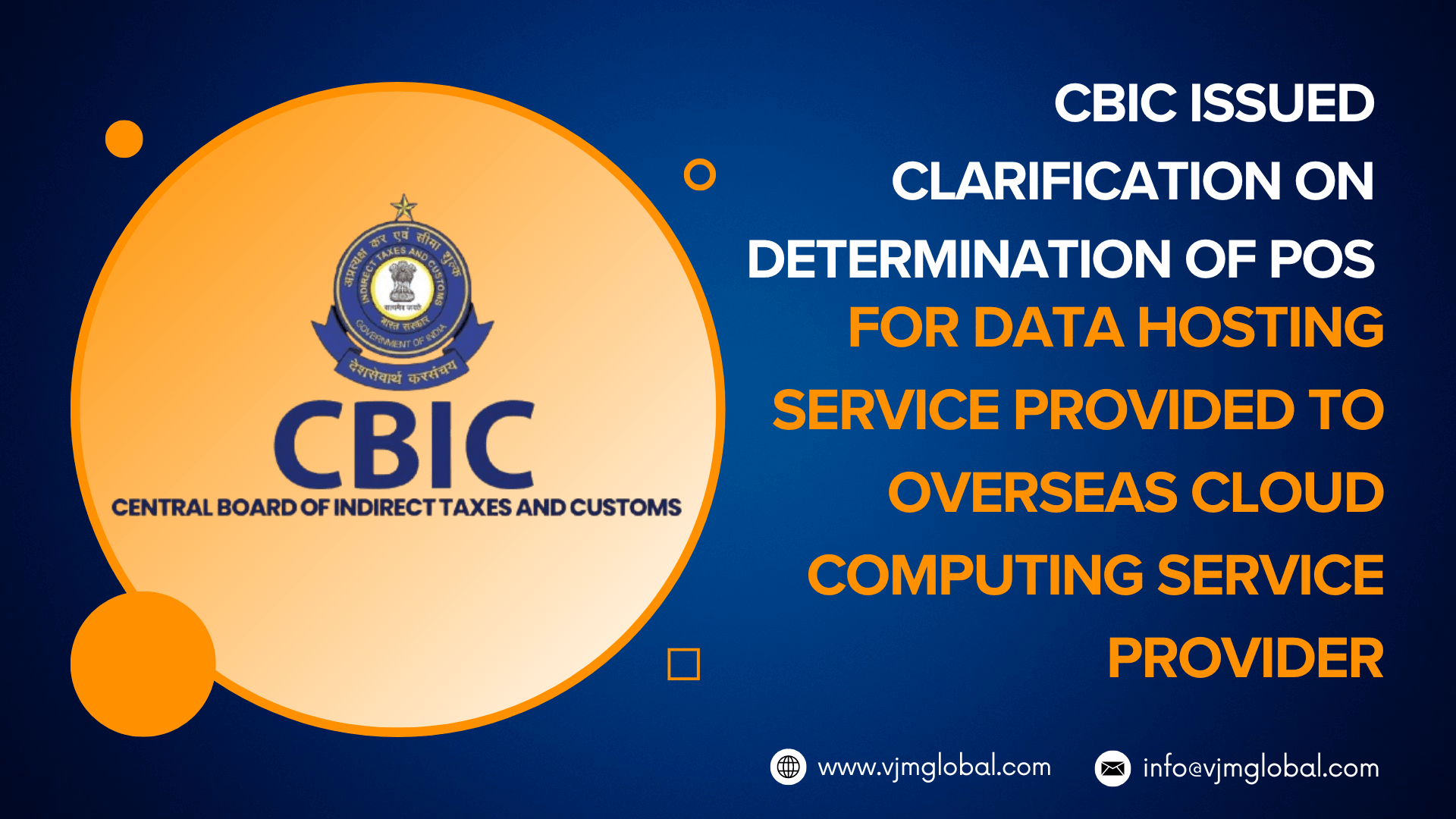With the closure of Assessment proceedings of Service Tax and VAT and 5 years have elapsed since the implementation of GST, now the department has initiated scrutiny of GST returns and most of the taxpayers are in receipt of various notices and orders from GST authorities in form GST ASMT-10, GST DRC-01, Notice from Anti-evasion etc.
We understand that receiving any notice from GST Authorities creates a situation of panic for the taxpayer even though he is legally complied. Notice issued under GST ASMT-10 can be handled with ease subject to having knowledge of correct provisions. In this article, we have discussed in detail that under which circumstances notice in form GST ASMT-10 can be issued and what necessary actions are required to be taken by the taxpayer and what are the possible consequences.
1. What is GST ASMT-10
- GST ASMT-10 is a notice issued by the tax authorities to a registered taxpayer when they identify discrepancies or inconsistencies in the GST returns filed by the taxpayer.
- This notice serves as a means to inform the taxpayer about the discrepancies and to seek clarification or rectification of the errors.
- As per Section 61 of CGST Act, 2017 read with Rule 99 of CGST Rules, 2017, a GST Officer has the authority to examine the returns based on certain risk parameters.
- If during the assessment, proper officer finds any discrepancy then he shall issue the notice to the taxpayer in Form GST ASMT-10.
- In form GST ASMT-10, the proper officer shall inform the taxpayer about the discrepancy and will seek the explanation for such discrepancy within a period specified in the notice, not exceeding 30 days.
- The notice may also contain details of tax, interest, and any other amount payable due to such discrepancy.
2. Reasons for Issuing GST ASMT-10
GST ASMT-10 is issued when a proper officer finds any discrepancy during return scrutiny. Section 61 of the CGST Act, 2017 does not provide any illustrative list of discrepancies where GST ASMT-10 can be issued. Therefore, the proper officer can issue for any discrepancy noticed by him.
There can be several reasons why the tax authorities may issue a GST ASMT-10 notice to a taxpayer. Some common reasons include:
- Mismatch in Input Tax Credit (ITC) appearing in GSTR-2A/2B and ITC claimed in GSTR-3B.
- Mismatch in Tax Liability reported in GSTR-1 Vs. GSTR-3B.
- Non-filing or Delayed Filing of Returns.
- The difference in Tax Liability as per E-Way Bill and GSTR-3B.
- Purchase from a dealer whose GST registration is canceled with retrospective effect or whose GST registration is suspended.
- Purchases from dealers who are suspected to be fake or bogus.
3. Contents of GST ASMT-10
Here are the mainly contents of ASMT-10 the following details:
- Basic details :
- GSTIN (Goods and Services Tax Identification Number).
- Name & Address of the individual or business entity.
- Tax period for which the notice is issued.
- Discrepancy Observed:
- Details of any discrepancy and asking for an explanation.
- Tax Involved due to such deviation.
- Particulars of the tax officer:
- DIN (Director Identification Number) of the tax officer.
- Name, Signature & Designation of the tax officer issuing the notice.
4. How to respond to notices issued in GST ASMT-10
One thing to understand is that GST ASMT-10 is not a show-cause notice. It is a communication which merely highlights the anomalies noticed in GST Returns and corresponding GST payable due to such non-compliance. If such notice is handled with due case then proceedings will drop at this stage only. However, non-compliance of GST ASMT-10 will lead to the issuance of show cause notice in Form GST DRC-01.
Therefore, taxpayers are required to file responses with due care. A taxpayer should first understand the reasons for the issuance of GST ASMT-10 and then he should file a reply. Following are the possible action a taxpayer may take based on discrepancies highlighted in the GST return:
a. Difference in Output Liability in GSTR-1 and GSTR-3B:
- Taxpayers should first make a reconciliation of Turnover and output reported in GSTR-1 and GSTR-3B on a monthly basis in tabular form and should check whether there is any difference or not.
- While preparing reconciliation, due care should be given to amendments, Credit Note and Debit Note.
- In many cases, the System of GST department doesn’t consider amendments, Credit Notes and debits notes while comparing GSTR-1 and GSTR-3B. So, differences due to system error can be resolved with detailed replies.
b. Excess ITC claimed in GSTR-3B as compared to ITC appearing in GSTR-2B/GSTR-2A
- Assessee should prepare the party wise and invoice reconciliation of ITC appearing in GSTR-2A/2B and ITC claimed in GSTR-3B to check which party has defaulted in the filing of the GST return.
- If the issue is pertaining to FY 2017-18 or 2018-19 and reference may be given to Circular No. 183/15/2022-GST Dated 27th December, 2022. This Circular specifies what possible action can be taken by the assessee where the supplier has not reported sales in GSTR-1.
- If any Tax is payable due to incorrect reporting by the supplier then assessee may recover the same from the supplier with interest.
c. Purchase from dealers canceled with retrospective effect or Bogus/Fake Firm
- The GST department is canceling various GST registration with retrospective effect and therefore, buyers of such suppliers are receiving notices from the GST department that ITC is taken from canceled firms.
- In such a case, the taxpayer in receipt of GST ASMT-10 should connect with the corresponding supplier and ask him to get his GST registration revoked.
- Further, taxpayer may furnished a detailed reply to the proper officer mentioning that his purchase is genuine and may furnish following documents to substantiate his stand:
- Copy of Purchase Invoice
- Lorry Receipt, in case of supply of goods
- Stock Register
- E-waybill
- Bank Statement to establish that payment is made within 180 days.
- There are various judgments of Hon’ble high court which held that ITC can’t be denied merely on the grounds that GST registration of the supplier is canceled with retrospective effect. However, transactions against which ITC has been claimed should be genuine.
5. How to file a reply to GST ASMT-10
As per Section 61 of the CGST Act, the taxpayer is required to respond to the ASMT-10 notice within the time period specified in Notice, not exceeding 30 days, by filing a reply in the form of GST ASMT-11.
There are two possible scenarios that may arise in this situation:
a. Acceptance of discrepancies: If the taxpayer accepts the discrepancies mentioned in GST ASMT-10, the following steps need to be followed:
- The taxpayer is required to pay the tax amount mentioned in GST ASMT-10 along with interest and penalty.
- Payment must be done through Form DRC-03. While making payment, the assessee should select the correct section.
- Amount payable in GST DRC-03 can be paid through ITC or in cash.
- Assessee should inform the proper officer in Form GST ASMT-11 that amount mentioned in GST ASMT-10 has been paid along with copt of GST DRC-03.
- The taxpayer has the option to pay the tax using any of the following methods:
- Pay Tax in Form DRC
- Furnish invoice/debit note/amended invoice/amended debit note in GSTR1
- Pays tax while filing GSTR-3B
b. Disagreement with discrepancies: If the taxpayer disagrees with the discrepancies mentioned in ASMT-10, the following steps need to be followed:
- In this case the taxpayer shall file a reply in GST Form ASMT-11 explaining the reason for discrepancies.
- Assessee should file a point-wise reply along with detailed working and supporting documents such as:
- Copy of GST Return
- Certificate from Supplier/CA
- Copy of Invoices, Lorry Receipt and e-waybill
- Bank statement etc.
6. Procedure Post filing Reply
- Satisfactory Reply:
- If the Proper Officer is satisfied with the taxpayer’s reply, they will issue an order under GST ASMT-12 that reply is found satisfactory and corresponding proceedings have been dropped.
- GST ASMT-12 has a predefined format as follows:
“This has reference to your reply dated ——- in response to the notice issued vide reference no. ———- dated — . Your reply has been found to be satisfactory and no further action is required to be taken in the matter. “
- Unsatisfactory Reply
- If the reply is unsatisfactory, the Proper Officer may take action.
- The tax officer can issue Show Cause Notice in Form GST DRC-01 under any of the following sections:
- Section 65 means Audit by tax authorities
- Section 66 means Special Audit
- Section 67 means Survey/inspection
- Section 73 & 74 means Determines tax liabilities due to non-payment, short payment, erroneous refund, or incorrect utilization of input tax credit, without any intention of fraud or willful misstatement or suppression of facts.
Note: There is no timeline for the issue of GST ASMT-12.
7. Frequently Asked Questions
1. How to find notice in GST ASMT-10 in Portal?
Notices issued under section GST ASMT-10 can be accessed on GST portal (https://www.gst.gov.in) on following path:
“Services” >“User Services” >“View additional notices and orders”
In many cases, notices are merely received through courier or through email and no notice is uploaded on GST portal.
2. How to file a reply against GST ASMT-10?
The taxpayer shall prepare reply in the attached form in (offline form) and follow the following steps:
1. Go to “View additional notices and orders”
2. Select the notice for which reply is to be file (in case of more than one notices)
3. Go to “Reply”
4. Copy paste reply from the offline GST Form ASMT-11.
5. Attach the annexures (if any) VI. File using DSC or EVC
If notice is not available on the GST portal then Assessee should file a reply in hardcopy with the jurisdictional Assessing officer.

